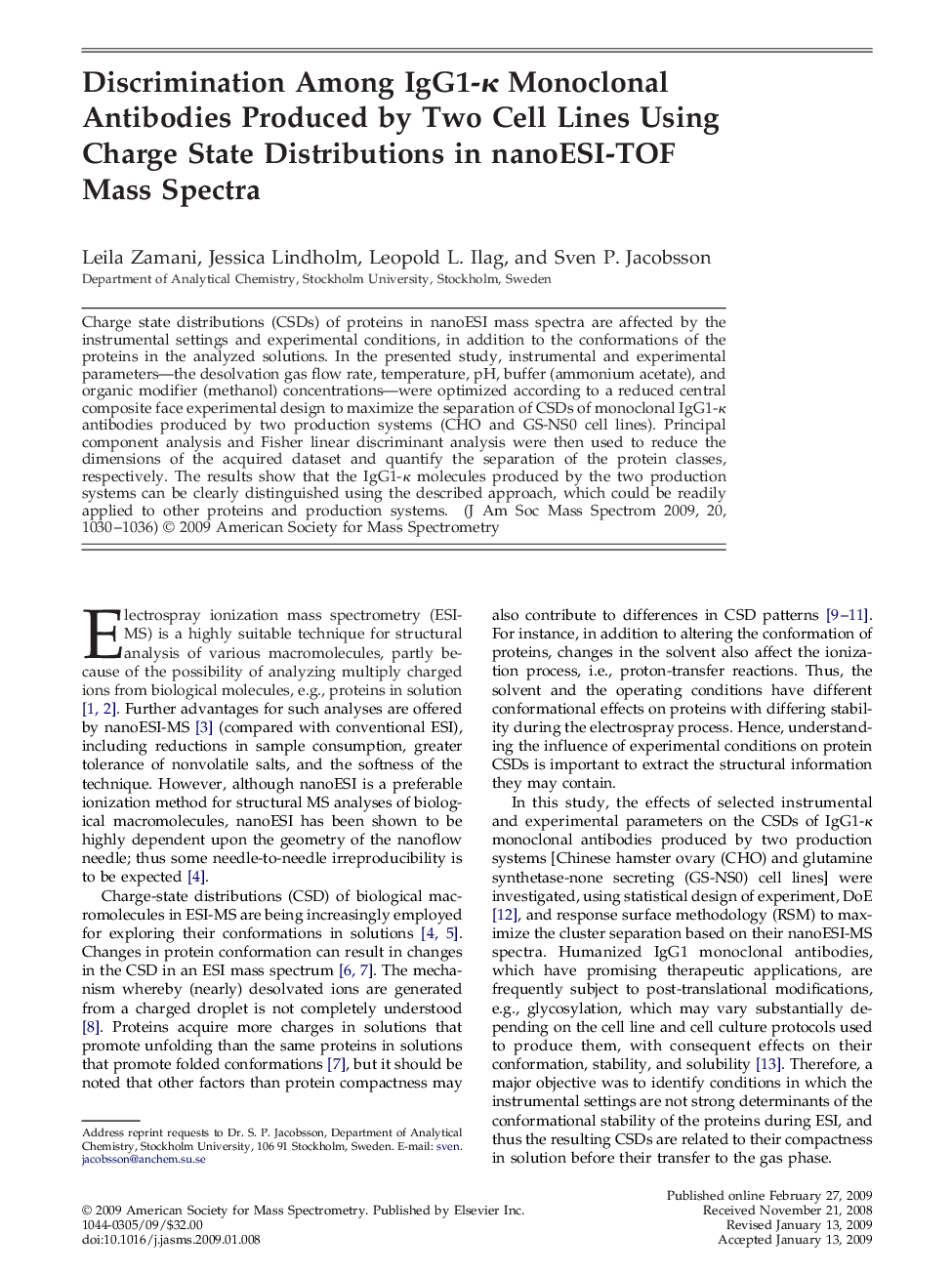| Article ID | Journal | Published Year | Pages | File Type |
|---|---|---|---|---|
| 1195275 | Journal of the American Society for Mass Spectrometry | 2009 | 7 Pages |
Charge state distributions (CSDs) of proteins in nanoESI mass spectra are affected by the instrumental settings and experimental conditions, in addition to the conformations of the proteins in the analyzed solutions. In the presented study, instrumental and experimental parameters—the desolvation gas flow rate, temperature, pH, buffer (ammonium acetate), and organic modifier (methanol) concentrations—were optimized according to a reduced central composite face experimental design to maximize the separation of CSDs of monoclonal IgG1-κ antibodies produced by two production systems (CHO and GS-NS0 cell lines). Principal component analysis and Fisher linear discriminant analysis were then used to reduce the dimensions of the acquired dataset and quantify the separation of the protein classes, respectively. The results show that the IgG1-κ molecules produced by the two production systems can be clearly distinguished using the described approach, which could be readily applied to other proteins and production systems.
Graphical AbstractA methodology for distinguishing between a recombinant monoclonal antibody produced in two different cell lines is described, utilizing charge state distribution and multivariate data analysis.Figure optionsDownload full-size imageDownload high-quality image (82 K)Download as PowerPoint slide
